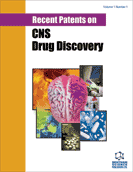Abstract
Alzheimers disease (AD), the most common form of dementia, is a degenerative and progressive neurological disorder characterized by deficit in the cholinergic transmission and formation of senile plaques containing β-amyloid protein in the brain. Although complete pathology of the disease has not been fully elucidated yet, there are several treatment strategies for AD treatment. The complexity of AD is also due to involvement of several enzymes through its progression. Therefore, the most important therapeutic approach has emerged as inhibition of acetylcholinesterase (AChE), which is the key enzyme in the breakdown of acetylcholine. Another very attractive approach to lower β-amyloid protein in fibrillar form has been the α- and β-secretase inhibitors. On the other hand, recently, N-methyl-D-aspartate (NMDA) receptor antagonists have become a strong alternative, which has been approved to be effective in treatment of moderate to severe type of AD. Within the past few years, some pharmaceuticals have become available for clinical use; however, none of them have been shown to possess ability to discontinue the disease up to date. Hence, there is obviously a great need for discovery of new drug candidates of natural or synthetic origins for AD treatment. This review will cover AChE-inhibiting pharmaceuticals from plants and their synthetic derivatives including relevant patent literatures which may promise a future hope for AD treatment.
Keywords: Alzheimer's disease, dementia, acetylcholinesterase, acetylcholinesterase inhibitors, physostigmine, galanthamine, huperzine A, plants
 30
30

